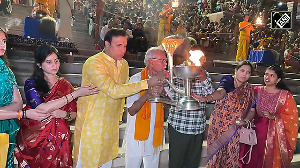Part I: 10 ways to find, retain best tutors at IIMs, IITs
An effective strategy for attracting and retaining the best faculty talent can be worked out by setting its following a few salient elements. We tackled 10 such ways earlier. Here are 9 more ways to do that:
11. Time & resources for research
If a teacher does not do research, there is a danger that she will become stale and obsolete. Barring some exceptional persons who are passionate about teaching and who keep themselves up to date, faculty research is important to maintain quality of teaching.
One of the general frustrations experienced by faculty in technical institutions for higher learning in India is the lack of time they have to engage in their own research. The lack of time for research is due at least part to erosion of infrastructure during the last one decade of cutbacks in support available in form of state funding to the institutions for higher learning.
Now faculties are doing many things to support the institutions that take away from their research time; this is not to say that these things are not valuable (e.g., outreach activities), but as teaching and administrative loads remain relatively fixed, it is research time that suffers.
Part of the reason this has happened is that faculty time spent on research is not auditable; faculty time can be freely spent on non-research activities without apparent cost. The only cost is long-term degradation of the research and academic programmes and in declining morale among the faculty.
Institutions can assume a competitive edge relative to their peers by improving support in the ranks of non-academic staff and thus releasing faculty to do the things that they are best qualified to do, namely research and teaching. Similarly, institutions can allow teaching "buy-outs" wherever required rather than overloading the internal faculty with excessive teaching.
In India, Indian Institutes of Management (IIMs) and Indian Institutes of Technology (IITs) usually allow a term off from teaching for its faculties so as to allow them to pursue their research agendas aggressively. Faculty devote considerable time to teaching, students, and crucial institutional tasks such as hiring and reviews, curriculum development, and administrative work.
As a consequence, time is the scarcest item for faculty -- especially sustained time to do research, writing, and creative work. A sabbatical leave (SL) provides large blocks of time (period of paid leave) for a faculty member to broaden or deepen educational interests, to explore new areas, or examine instructional methods to upgrade the educational program of the institute by improving her or his own competencies.
Full-time faculty members (within certain service criteria) should be eligible to apply for SL. During a sabbatical leave period faculty are expected to undertake a clearly defined piece of work in furtherance of their research or teaching. Sabbatical leave helps in honing the faculty's teaching and research abilities and this in turn leads to a better motivation level of the faculty members.
In developed countries sabbatical leave is granted only once in 5 or 7 years. In India IIMs/IITs and most other public sector technical educational institutions already entitle their faculty members to SL. However, most private institutions curb their faculty members from availing SL, despite such provisions being stated in their self defined rules and regulations for their faculty members.
Besides the time for the research, faculty needs to be provided with resources for the research. The quality of research support (research space- laboratory and office space, liberal research grants, library holdings, subscription to the electronic research paper databases, travel grants for research activities, and research assistants) is extremely important in attracting and retaining first-rate faculty talent.
Institution must create and financially support the joint research opportunities for the faculty with nationally and internationally renowned researchers from other institutions.
Another way to hire and retain the talented faculty with research inclination is to provide teaching relief or lower administrative load in lieu for development of new major research proposals or initiatives. Rewarding the faculty research initiatives with money is a good way to motivate the faculty members with research inclination.
As stated earlier, institutions must capitalise on opportunities to attract research students of the highest quality to improve the research environment. Nurturing a PhD programme with necessary infrastructure and support will create an auspicious research environment. It helps faculties to bring out/exercise their research skills. The full-time research scholars getting fellowship and trained research assistants enhance the faculty's research initiatives.
While institutions do-not provide enough time and resources to faculties to pursue their research agendas, they do pressurise the faculty to publish papers for purpose of being rated highly by the rating agencies.
Such pressure on talented faculty members is counter-productive and they may decide to leave the institution to join one which provides them the resources and time for their useful contribution to the research in their respective fields.
12. Work load
While time and resources for research are necessary, however, teaching load of any faculty member must not fall below a pre-defined minimum level because a researcher who does not teach runs the risk of being too narrow and redundant. She or he misses out on the stimulation that bright young questioning minds pose.
The institute should strike a balance between faculty's teaching and research time at the time of work load allocation. Often work load assigned for a faculty includes teaching, research and consulting and administrative activities. Inadequate apportionment of total work load across these three categories would hamper the long term goals of both institute and faculty.
Redesign the workload disseminating system (based on the ability of the faculty) so as to encourage the faculties to strike a balance between their teaching, research & consulting, and administrative activities. Minimising the administrative workload would facilitate excellence in teaching and research activities, where as the vice versa does not serve the purpose. Ensure adequate support staff in case of assigning administrative work becomes inevitable. In line with Kumar & Kodwani (2003), an indicative apportionment of faculty time between teaching, research and consulting and administrative activities is suggested in Table 2.
Table 2: A scheme for apportionment of faculty time
|
Activity |
Percentage of faculty time |
|
Teaching |
55 to 75 |
|
Research/Publications/ MDPs / Consulting, et cetera |
20 to 40 |
|
Administrative |
5 |
|
Total |
100 |
While minimising the allocation of available time to administrative activities is warranted, total load assigned per faculty should also be optimised. Overloading the faculty with excessive class-room teaching constraints their time available for preparation. Kumar & Kodwani (2003) suggests a maximum teaching load of four to five courses in an academic year where each course involves a thirty hours of in-class teaching.
They draw attention to the fact that teaching of a course generally includes actual in-class time, class preparation time, time spent for mentoring and directing the students before and after the class session, as well as time spent for grading the assignments/tests/exams. In certain cases, such time could also include time spent in revising old or creating new courses.
Kumar & Kodwani (2003) estimate that teaching of a typical in-class thirty hour course involves a total of 185-200 hours of faculty time (Table 3).
Table 3: Faculty time spent in teaching of in-class 30-hour course
|
Particulars |
Already Taught Course |
New Course |
|
Actual in class time |
30 hours |
30 hours |
|
Preparation time |
75 hours |
90 hours |
|
Out-of-class contacts |
30 hours |
30 hours |
|
Evaluation of assignments / quizzes / exam papers |
50 hours |
50 hours |
|
Total |
185 hours |
200 hours |
Source: Kumar & Kodwani (2004)
13. Transparent performance appraisal of faculty
An irregular and untimely faculty appraisal demeans the ability of any faculty to perform better and can be reason for dissatisfaction for the talented faculty members. Institute should adopt and strictly adhere to practice of timely (mid-year and year-end) faculty appraisals.
Students' feedback is an essential component of faculty appraisal and need to be promptly communicated to concerned faculty members.
The performance measurement parameters should be measurable, transparent and disclosed to all faculty members. An absolutely essential part in retaining faculty is recognition of efforts and accomplishments.
Scientifically designed realistic reward system (which is aligned with the merit in workload) is highly essential in order to timely recognise the outstanding contributions made by the faculties in teaching and research activities. Performers can be recognised by financial as well as non-financial rewards.
Nevertheless, financial rewards are better means to recognise and appreciate outstanding contributions by individual faculty. These awards can also include one-time bonuses for accomplishments in one's research field. Several institutions have established 'distinguished' or 'endowed chair' professorships that recognise distinguished research accomplishments.
Constituting 'a best faculty reward' can be good way to recognise the contributions of best faculty performer in teaching.
14. Involvement in academic decision making
In many technical institutions faculties are restricted to teaching and their involvement in crucial academic decision making is minimal or almost negligible.
They are not consulted on matters related to acquisition of books and journals for library, recruitment of new faculty members and enrollment of new students. This increases apathy and alienation among talented faculty on all matters relating to institution.
15. Faculty freedom
Talented faculty members are brilliant minds with formidable reputations and huge egos. They believe they can best manage their jobs themselves and do not like to be told what to do. Lorange (2003) asserts that an academic institution has to be an eminently attractive and interesting place to attract and keep the dedicated faculty.
He further argues that the perception of faculty members of their work and the organisational context they operate in should be a leading variable. Again, Lorange comments from his own experience that "[in] general, it is thus critically important that faculty members feel that they can do what they are interested in, what they are inspired by, what they wish -- based on their own perception rather than having to force-fit their interests into programmes designed by others" (Lorange, 2003).
It is in this context that technical institutions should adopt a system of flexi working hours for its faculty members. The emphasis should not be on time spent mechanically in side the institute's premises but on the efficient result oriented performance of the responsibilities assigned to them.
However, statistical proper record of actual time spent in the institute by every faculty member everyday may be maintained. It should, however, clarified that flexibility of working hours does not mean minimal working hours. The idea is to treat faculty members as respected and responsible members of institute's fraternity who may be given freedom to work for institute at a time and place of their choice commensurate with discharging responsibilities assigned to them.
Flexible working hours do not absolve faculty members from not coming to institute every working day unless she/he is on leave. Unless a faculty member takes a prior permission to be away from institute for personal or official reasons, it is her/his responsibility to ensure her/his availability in the institute campus for consultations by the students and effective performance of her/his academic & administrative responsibilities.
It may be advised that faculty should normally be present in institute between 11.00 a.m. to 4.30 p.m. on all working days for effective performance of their administrative duties and being available for 'after-class consultations' by the students. Any faculty trying to take undue advantage of 'system of flexi working hours' may be reprimanded by the institute's administrative authorities.
A related aspect of 'faculty freedom' is the government's intervention in the affairs of technical institutions. In recent years technical institutions in India are experiencing an increasing intervention from the government.
This has severest impact on the issue of hiring new faculty and retaining existing faculty. A key reason is that the best academicians prefer to work in institutions with a minimum of state intervention.
16. Proactive management to provide world-class experience to the faculty
It is said that proactive initiatives are the roots for customer delight; likewise the same are imperative to retain the exceptional faculties also. Teaching profession demands a due respect and recognition. Antagonistic nature of administrative authorities and inhospitable behavior among the colleagues would create stress in personal life of the faculty.
Even alluring salaries and higher incentives will fail to retain the faculties due to cultural inadaptability, as India is a culturally diversified country. Structuring a defined hierarchy to remove the multiple reporting and confusion is necessary. Ensuring a regular and frequent two-way communication of faculty with principal/director/president and dean can help a great deal in timely dealing with any resentment within the faculty.
Social gatherings, including family meetings, to overcome professional isolations and improve community feeling should be frequently organised by the institution.
17. Creating opportunities for spousal employment
Another factor that frequently acts as a barrier to hiring and retaining talented faculty is the 'trailing spouse.' Highly qualified faculty recruits often choose not to accept an offer at another institute because their partner is employed elsewhere and cannot find employment in vicinity to institute offering them the position or because two faculty positions are required and only one is available.
The process of finding a suitable position for a trailing spouse is inordinately difficult, time-consuming, frustrating, and exhausting. Unfortunately, most technical institutions in India do not have any set mechanism for dealing with trailing spouse cases.
Institutions can take a leaf from multinational companies who are increasingly exercising 'Spousal/Partner employment' as a retention strategy. To help solve the problem of spousal employment, the institution can offer an appropriate position to the spouse within the institution. No compromise should be made regarding the eligibility criteria and competencies expected for the offered position.
However, where it is not possible to offer an in-house position to the spouse, institution's career center can help the spouse in getting an appropriate position outside the organisation. Such efforts can do much to augment the institute's hiring initiatives.
18. Pro-active retention endeavours
While institutions will always have to be reactive to the offers made to its talented faculty by other institutions, it is beneficial to be as proactive as possible in identifying faculties that might be actively sought by other institutions and creating conditions within the institution to retain them.
When a faculty member is dissatisfied and has already taken steps to secure an outside offer, it is difficult (but not impossible) to retain him or her. Pre-emptive actions when a faculty member is vulnerable to looking around and being courted elsewhere are often more effective and less costly.
Institutions should proactively identify individuals that have a potential for leaving or being targeted by other institutions. It is important that the area chairs and deans are engaged with their faculty and recognise situations where pre-emptive actions are needed.
Flexibility to address retention cases throughout the year and the ability to pro-actively respond to external market forces are important for retaining the outstanding faculty.
19. Exit interviews
Exit interview is an important tool to get feedback on various issues that plague an institution. Exit interview enables an institute to understand the outgoing faculty's views about the environment, culture, processes and systems, leadership and managing styles, clarity of roles, commitments or attitudes of associates within the organisation.
These views may be the most frank and hence the valuable source of information and feedback on current environment in the institution. In a way institute can use the exit interviews to learn more about what it is doing well, what more is needed to still improve the institutional overall environment as is experienced by its faculty members.
In conclusion, this paper has offered some suggestions for attracting and retaining the talented faculty in technical institutions in India based on author's own understanding of this issue developed by being a faculty member himself; and his informal discussions with numerous faculty members of technical institutions in India.
In future formalised research endeavours on this matter should collect and analyse both qualitative and quantitative data to reveal the magnitude of both direct and indirect influences of above identified elements of attracting and retaining strategies on the institutions' success to hire and retain best faculty for them.
The author is a faculty member in the Finance & Accounting discipline at Indian Institute of Management Lucknow. Before that he was deputy director (business planning) and an associate professor at University of Petroleum and Energy Studies. He has done his PhD in Finance from IIT Bombay.






 © 2025
© 2025